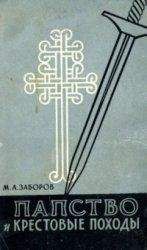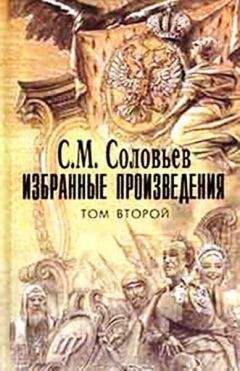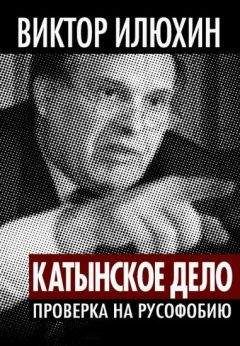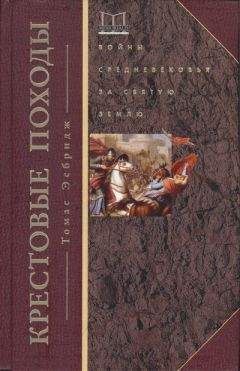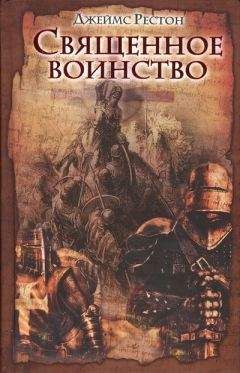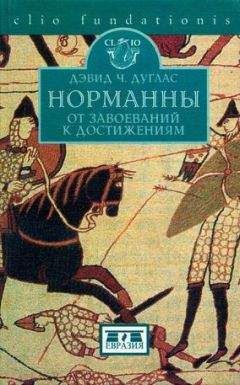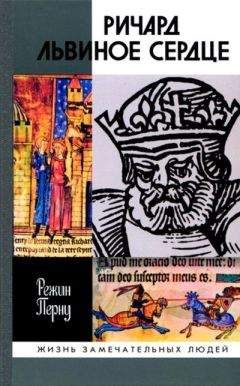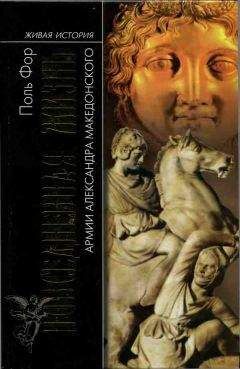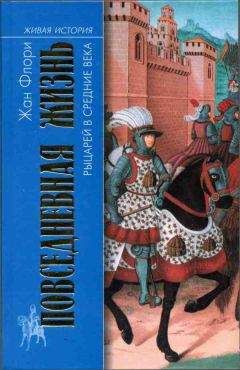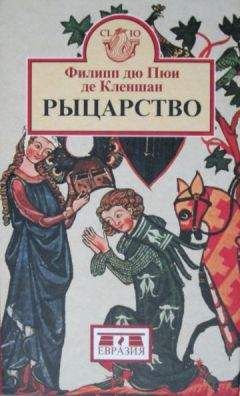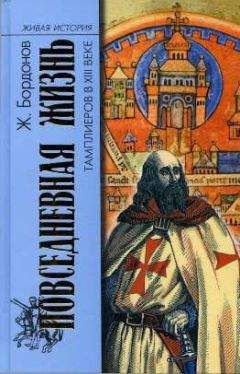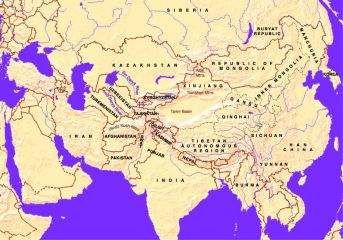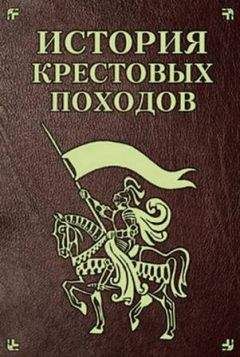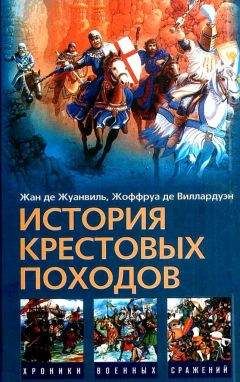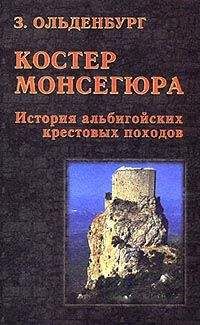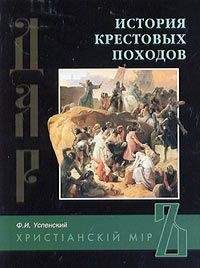Жан Флори - Боэмунд Антиохийский. Рыцарь удачи
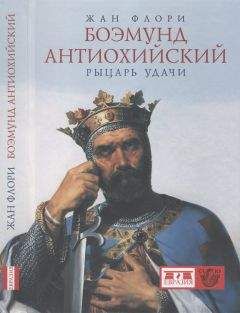
Скачивание начинается... Если скачивание не началось автоматически, пожалуйста нажмите на эту ссылку.
Жалоба
Напишите нам, и мы в срочном порядке примем меры.
Описание книги "Боэмунд Антиохийский. Рыцарь удачи"
Описание и краткое содержание "Боэмунд Антиохийский. Рыцарь удачи" читать бесплатно онлайн.
Герой новой книги известного историка-медиевиста Жана Флори Боэмунд Антиохийский входил в число предводителей Первого крестового похода и был одним из самых прославленных крестоносцев той эпохи. Сама его бурная жизнь, полная взлетов и падений, может стать иллюстрацией эпохи крестовых походов и истории западноевропейского рыцарства. Старший сын нормандского рыцаря Роберта Гвискарда, прошедшего путь от простого рыцаря до владыки Южной Италии, Боэмунд ответил на призыв папы Урбана II отправиться отвоевывать Святую землю. Вместе с крестоносным воинством он участвовал во всех крупных баталиях Первого крестового похода: сражался с турками-сельджуками в битве при Дорилее, осаждал ключевой стратегический пункт в Северной Сирии, Антиохию. Благодаря своей отваге, дипломатическим талантам и ловкости он стал правителем первого христианского государства на Ближнем Востоке — Антиохийского княжества. Жан Флори не случайно написал биографию Боэмунда — в этом опытном военачальнике и блистательном рыцаре, как в зеркале, отражались все достоинства и пороки крестоносного воинства: истовое благочестие и жажда наживы, беспримерная отвага и свирепая жестокость. На примере Боэмунда Жан Флори показывает изнанку крестоносной эпопеи: распри и подковерную борьбу за власть и влияние в лагере крестоносцев, тайные переговоры с византийцами и мусульманами, подготовку военных операций и сражений. Биография Боэмунда Антиохийского, созданная Жаном Флори, — это не только захватывающая эпопея, но и неизвестная история Первого крестового похода.
Orderic Vital, Histoire ecclésiastique, éd. et trad. M. Chibnall, The Ecclesiastical History of Orderic Vitalis, Oxford, 1965–1978.
Papsturkunden für Heiligen Landes, éd. R. Hiestand, Gôttingen, 1985.
Pascal II, Epistolae, PL 163.
Pierre Tudebode, éd. Hill, J. H. et L. L., Historia de Hierosolymitano itinere, Paris, 1977.
Pseudo-Urbain II, Lettre 212 à l’empereur Alexis, PL 151, col. 485.
Raoul de Caen, Gesta Tancredi, RCH Hist. Occ. III, p. 603–716; Bachrach, B. S. et Bachrach, D. S., The Gesta Tancredi of Ralph of Caen, Aldershot, Ashgate, 2005.
Raoul Tortaire, Epistula VII ad Gualonem, Poema de obsidione Dyrrachii, éd. Marbury B. Ogleet Dorothy M. Schullian, RodulfiTortarii Carmina, Rome, American Academy in Roma, 1933, p. 298–316.
Raymond d’Aguilers, éd. J. H. et L. L. Hill, Le «Liber» de Raymond d’Aguilers, Paris, 1969.
Recueil d’annales angevines et vendômoises, éd. Halphen, Louis, Paris, 1903.
Recueil des actes des ducs normands d’Itale (1046–1127), t. I: Les premiers ducs (1046–1087), éd. L.−R. Ménager, Bari, 1980.
Regesta pontificum Romanorum, éd. P. Jaffé et G. Wattembach, Leipzig, 1885.
Regesta regni Hierosolymitani, Innsbruk, 1893–1904 et Idem addimentum, éd. R. Rôhricht.
Richard de Poitiers (le Poitevin), Chronicon (extraits), HF 12, p. 411–413 (reprend Muratori, Antiquitatum Italiae, col. 1077–1108); addenda, p. 418–421.
Robert le Moine, Hierosolomytana expédition, RHC, Hist. Occ. III, p. 717–801; trad., intro. et notes par Carol Sweetenham, Robert the Monk’s History oî the First Crusade, Historia Iherosolimitana, Aldershot, Ashgate, 2005.
Romuald de Salerne, Chronicon, éd. C. A. Garufi, RIS, VII, 1, Città del Castello, 1935; éd. et trad. Cinzia Bonetti, Romualdo II Guarna, Chronicon, Cava de Tirreni, 2001; Romuald de Salerne, Chronicon, éd. Arndt, MGH SS 19, p. 384–461.
Suger, Vita Ludovici Grossi Regis, éd. et trad. H. Waquet, Paris, 1964.
Yves de Chartres, Epistolae, PL 162, col. 9–288 (Lettre 1–70, éd. et trad. J. Leclercq, Correspondance, t. I, Paris, 1949).
Б. Основная литература(Сборники статей, акты коллоквиумов и коллективные труды авторов упомянуты под именем автора или издателя.)
Albu, E., «Probing the passion of a Norman on crusade; the Gesta Francorum et aliorum Hierosolimitanorum», Anglo-Norman Studies, 27, 2005, p. 1–15.
Alphandéry, P., et Dupront, Al., La chrétienté et l’idée de croisade: t. I et II, Paris, 1954 (1995).
Amouroux-Mourad, M. A., Le comté d’Édesse, 1098–1150, Paris, 1988.
Angold, M. A., The Byzantine Empire, 1025–1204: A Pontifical History, Londres, 1997.
Asbridge, Th. S., The Creation of the Principality of Antioche, 1098–1130, Woodbridge, 2000.
Asbridge, Th. S., The First Crusade, A New History, Londres, 2004.
Aubé, P., Les Empires normands d’Orient, Paris, 1983.
Aubé, P., Roger II de Sicile, Paris, 2001.
Bachrach, B. S., «The siege of Antioche: a study of military demography», War in History, 6, 1999, p. 127–149.
Balard, M., Gênes et l’Outremer, 2 vol., Paris-La Haye, 1973–1981.
Balard, M., Les Croisades, Paris, 1988.
Balard, M., (éd.), Autour de la première croisade [Actes du Colloque de la Society for the Study of the Crusades and and the Latin East (Clermont-Ferrand, 22–25 juin 1995)], Paris, 1996.
Balard, M., Kedar, B. Z. et Riley-Smith, J. (éd.), Dei gesta per Francos: études sur les croisades dédiées à Jean Richard, Aldershot, 2001.
Balard, M. et Ducellier, A. (dir.), Migrations et diasporas méditerranées (Xe-XVIe s.), Paris, 2002.
Balard, M., Les Latins en Orient (XIe-XVe siècle), Paris, 2006.
Balard, M. et Ducellier, A. (dir.), La Partage du Monde: échanges et colonization dans la Méditerranée médiévale, Paris, 1998.
Baldwin, B., «Bohemond’s Breathing», Byzantine and Modem Greek Studies, 15, 1991, p. 314–316.
Becker, A., Papst Urban 11 (1088–1099), Stuttgart, 1964 (t. I) et 1988 (t. II).
Beech, G. T., «A norman-italian adventurer in the East: Richard of Salerno, 1097–1112», Anglo-Norman Studies 15, Woodbridge, 1993, p. 25–40.
Beech, G. T., «The crusader lordship of Marash in Armenian Cilicia, 1104–1149», Viator, 27, 1996, p. 35–52.
Bertaux, É., L’Art dans l’Italie méridionale, Paris, 1903.
Blake, E. O., «The formation of the “crusading idea”», Journal of Ecclesiastical History, 21, 1970, p. 11–31.
Bliese, J. R. E., «The motives of the First Crusaders: A social psychological analysis», Journal of Psycho-History, 17, 1990, p. 393–411.
Bliese, J. R. E., «The just war as concept and motive in the central Middle Ages», Medievalia et Humanistica, n.s. 17, 1991, p. 1–26.
Bouet, P. et Neveux, F. (sous la dir. De), Les Normands en Méditerranée dans la sillage de Tancrède (Colloque de Cerisy-la Salle, 24–27 septembre 1992), Caen, 1994.
Brundage, J. A., «St. Anselm, Ivo of Chartres and the ideology of the first crusade», dans Les Mutations socio-culturelles au tournant des XIe−XIIe (colloque du CNRS, Le Bec-Hellouin, 11–16 juillet 1982), p. 175–187.
Brundage, J. A., The Crusades, Holy War and Canon Laws, Aldershot, 1991.
Bull, M., Knightly Piety and the Lay Response to the First Crusade (The Limousin and Gascony, c. 970-c. 1130), Oxford, 1993.
Bull, M., «The roots of lay enthusiasm for the first crusade», History, 78, 1993, p. 353–372.
Bull, M. et Housley, N. (éd.), The Experience of Crusading, Cambrigd, 2003.
Cahen, Cl., «La campagne de Mantzikert d’ après les sources musulmanes», Byzantion, 9, 1934, p. 628–642.
Cahen, Cl., La Syrie du Nord à l’époque des croisades et la principauté d’Antioche, Paris, 1940.
Cahen, Cl., «En quoi la conquête turque appelait-elle la croisade?», Bulletin de la faculté des lettres de Strasbourg, Strasbourg, 1950, p. 118–125.
Cahen, Cl., Orient et Occident au temps des croisades, Paris, 1983.
Cardini, F., La culture de la guerre, Xe-XVIIIe s., Paris, 1982.
Cardini, F.,Lozito, N., et Vetere, B. (éd.), Boemondo, storia di un principe normanno, Galatina, 2003.
Chalandon, F., Essai sur le règle d’Alexis Ier Comnène (1081–1118), Paris, 1900.
Chalandon, F., Histoire de la domination normande en Italie et en Sicile, Paris, 1907.
Chalandon, F., Histoire de la première croisade jusqu’à l’ election de Godefroy de Bouillon, Paris, 1925.
Charanis, P., «A greek source on the origin of the First Crusade», Spéculum, 24, 1949, p. 93–94.
Charanis, P., «Byzantion, the west and the origin of the first crusade», Byzantion, 19, 1949, p. 17–36.
Chazan, R., European Jewry and the First Crusade, Berkeley-Londres, 1987.
Chazan, R., The first crusade as reflected in the earliest Hebrew narrative, Viator, 29, 1998, p. 25–38.
Chevedden, P. E., «Canon 2 of the Council of Clermont (1095) and the goal of the eastern Crusade: “To liberate Jerusalem” or “to liberate the Church of God”?», Annuarium Historiae Conciliorum, 37, 2005, p. 57–108.
Cheynet, J.−Cl., «Mantzikert, un désastre militaire?», Byzantion, 50, 1980, p. 412–438.
Cheynet, J.−Cl., Byzance. L’Empire romain d’Orient, Paris, 2001.
Cheynet, J.−Cl., Pouvoir et contestation à Byzance (963–1210), Paris, 1990. Cheynet, J.−CL, «Thathoul, Archonte des Archontes», Revue des études Byzantines, 48, 1990, p. 233–242.
Cote, P. J., «Christians, Muslims and the “libération” of the Holy Land», Catholic Historical Review, 84, 1998, p. 1–10.
Cote, P. J., The Preaching of the Crusades to the Holy Land, 1095–1270, Cambridge (Mass.), 1991.
Concile de Clermont de 1095 et la Croisade (Le) [Actes du colloque universitaire international de Clermont-Ferrand (23–25 juin 1995)], Rome, 1997.
Concilio di Piacenza e le crociate (il) [Actes du colloque international de Piacenza], Piacenza, 1996.
Constable, G., Monks, Hermits and Crusaders in Medieval Europe, Londres, 1988. Coppola, G., «Bohémond Ier: Prince d’Antioche», Les Dossiers d’archéologie, 299, 2005, p. 88–97.
Coppola, G., «Les Normands au Proche-Orient. Batailles et château de la première croisade», Les Dossiers d’archéologie, 299, 2005, p. 76–87.
Cowdrey, H. E. J., Pope Gregory VII, 1073–1085, Oxford, 1998.
Cowdrey, H. E. J., «Pope Urban II and Idea of Crusade», Studi Medievali, 36, 1995, 2, p. 721–742.
Cowdrey, H. E. J., Popes, Monks and Crusaders, Londres, 1984.
Cowdrey, H. E. J., «The Papacy and the origins of crusading», Medieval History, 1, 3, 1991, p. 48–60.
Crozet, R., «Le voyage d’Urbain II et ses négociations avec le clergé de la France», Revue historique, 179, 1937, p. 271–310.
Crudo, G., La SS. Trinita di Venosa, Trani, 1899.
Cuozzo, E. et Martin, J.−M. (sous la dir. de), Cavalieri alla conquista del Sud. Studi sull’Italia normanna in memoria di Léon-Robert Ménager, Rome-Bari, 1998.
Cuozzo, E., «Quei maledetti Normanni.» Cavalieri e organizazzione militare nel Mezzogiorno normanno, Naples, 1989.
Cuozzo, E., La Cavalleria nel regno normanno di Sicilia, Antripalda, 2002.
Cutler, A., «The First crusade and the idea of “conversion”», The Muslim Word, 58, 1968, p. 57–71 et 155–164.
De Mas Latrie, L., «Les patriarches latins d’Antioche», Revue de l’Orient latin, 2, 1894, p. 192–205.
De Saulcy, F., «Tancrède», Bibliothèque de l’École des Chartes, 1842–1843, 1er série, IV, p. 301–315.
Dédéyan, G., «L’Arménien Fîroûz: héros de la première croisade ou renégat et relaps?» dans Félonie, trahison, reniements au Moyen Âge, Les Cahiers du CRISIMA, n. 3, 1997, p. 511–522.
Dédéyan, G., «Le cavalier arménien», dans J.−P. Mahé et Robert W. Thomson (éd.), From Byzantium to Iran. Armenian Studies in Honour of Nina G. Garsoïan, Scholar Press (s.I), 1997, p. 197–228.
Dédéyan, G., Les Arméniens entre Grecs, musulmans et croisés. Études sur les pourvoirs arméniens dans le Proche-Orient méditerranéen (1068–1150), Lisbonne, 2003, 2 vol.
Delamelle, É., L’Idée de croisade au Moyen Âge, Turin, 1980.
Demurger, A., Chevaliers du Christ. Les ordres religieux-militaires au Moyen Âge (XIe-XVIe siècle), Paris, 2002.
Douglas, D. C.,The Norman Achievement, 1050–1100, Londres, 1969.
Douglas, D. C.,The Norman Fate, 1100–1154, Berkeley-Los Angeles, 1976.
Downey, G., A History of Antioch in Syria, Princeton, 1960.
Ducellier, A. et Micheau, F., Les Pays d’Islam, VIIe-XVe siècles, Paris, 2000.
Ducellier, A., Le Miroir de l’islam. Musulmans et chrétiens d’Orient au Moyen Âge (VIIe-XVe s.), Paris, 1971.
Ducellier, A., Chrétiens d’Orient et Islam au Moyen Âge, VIIe-XVe siècle, Paris, 1996.
Duparc-Quioc, S., La Chanson d’Antioche, Paris, 1976 (texte) et 1978 (étude).
Dupront, A., Du sacré, croisades et pèlerinages. Images et langages, Paris, 1987.
Dupront, A., Le Mythe de croisade, Paris, 1997 (4 vol.).
Edbury, P. W., Kingdoms of the Crusaders, from Jerusalem to Cyprus, Aldershot, 1999.
Eddé, A.−M., «Ridwan, prince d’Alep de 1095 à 1113», Revue des études islamiques, vol. 54, 1988 (pour 1986), p. 101–125.
Edgington, S. B., «From Aaachen: a New Perspective on Relations between the Crusaders and Byzantium, 1096–1120», Medieval History, 4, 1994, p. 156–169.
Edgington, S. B., «Romance and Reality in the sources for the Sieges of Antioch, 1097–1098», dans Dendrinos, C., Harris, J., Harvalia-Crook, E. et Herrin, J., Porphyrogenita, Essays… in Honour of Julian Chrysostomides, Ashgate, Aldershot, p.. 33–46.
Edgington, S. B. et Lambert, S. (éd.), Gendering the Crusades, Cardiff, 2001.
Epp, V., Fulcher von Chartres, Studien zur Geschichtsschreibung des ersten Kreuzzuges, Düsseldorf, 1990.
Erdmann, C., Die Entstehung des Kreuzzugsgedankens, Stuttgart, 1955 (1935); trad. angl. M.W. Baldwin et W. Goffart, The Origin of the Idea of Crusade, Oxford, 1977.
Falla Castelfranchi, M., «Il mausoleo di Boemondo a Canosa», dans I Normanni popolo d’Europa (1030–1200), Catalogo délia mostra (Roma, Palazzo Venezia, 28 gennaio — 30 aprile 1994), Venezia, 1994, p. 327–330.
Faureau-Lilie, M.−L., Die Italiener im Heiligen Land vom ersten Kreuzzug bis zum Tode Heinrichs von Champagne (1098–1197), Amsterdam, 1989.
Подписывайтесь на наши страницы в социальных сетях.
Будьте в курсе последних книжных новинок, комментируйте, обсуждайте. Мы ждём Вас!
Похожие книги на "Боэмунд Антиохийский. Рыцарь удачи"
Книги похожие на "Боэмунд Антиохийский. Рыцарь удачи" читать онлайн или скачать бесплатно полные версии.
Мы рекомендуем Вам зарегистрироваться либо войти на сайт под своим именем.
Отзывы о "Жан Флори - Боэмунд Антиохийский. Рыцарь удачи"
Отзывы читателей о книге "Боэмунд Антиохийский. Рыцарь удачи", комментарии и мнения людей о произведении.





